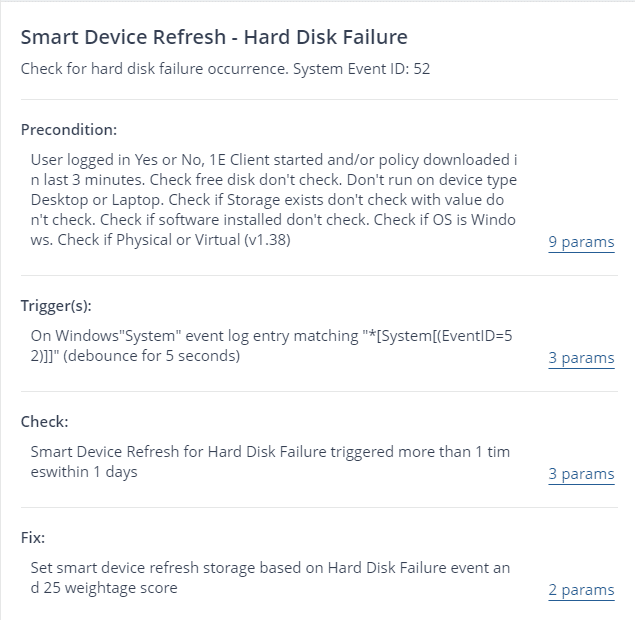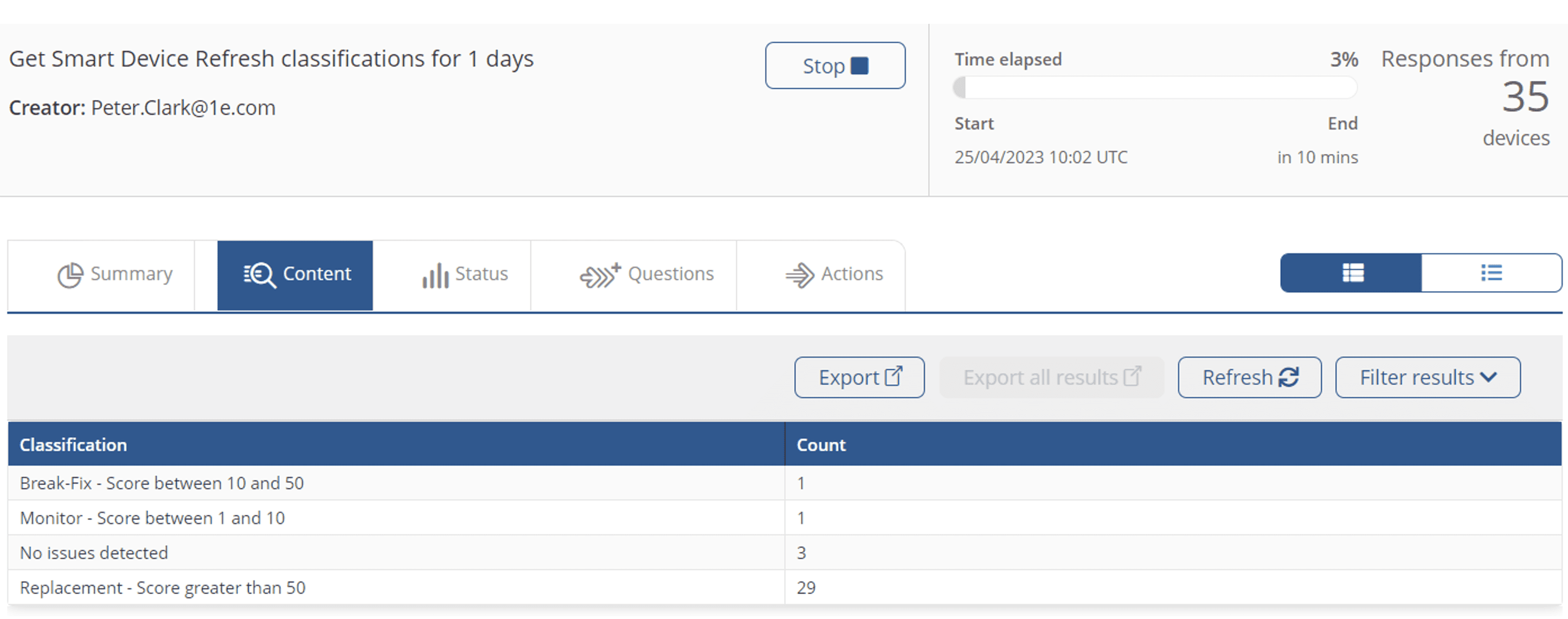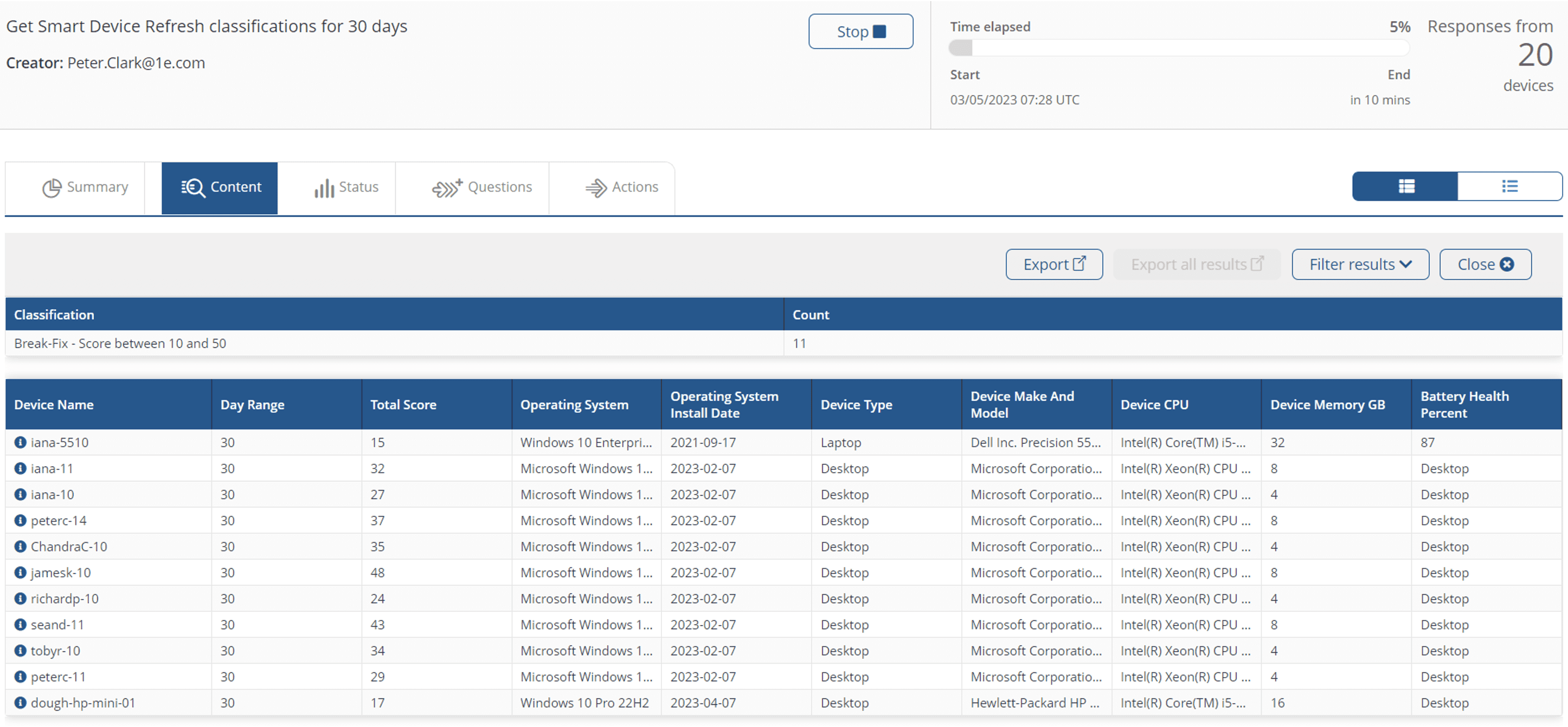Bridging the gap: optimizing experience and budget
Employees want computers that work. And when they stop working well, they want a new computer. But buying new devices has a major impact on your company's bottom line. So, you get stuck between a rock and a hard place.
What if there was a way to easily optimize both the employee's device experience AND your hardware replacement budget?
1E makes hardware lifecycle management simple with a smart device refresh capability that helps you get the most out of every device. And when it is time to buy new hardware, the decision is clear because you know you've done everything possible to extend the device's usability.
Device doctor: diagnosing and healing with ease
This smart device refresh capability is all about 1E Endpoint Automation rules. These rules help extend device lifespan and give your end users a delightful experience.
So, how does the 1E Platform pull this off?
Think of 1E Endpoint Automation rules as little helpers, ready to jump into action based on specific criteria. Once triggered, they shine a light on which device components need healing, whether it's replacement, remediation, or monitoring. Just like a doctor bases your treatment plan on your symptoms, 1E Automation Rules analyze the behavior of devices so they can apply the perfect fix.
By automatically diagnosing problems and giving you a heads-up when things go awry, you can confidently take the best steps forward.
Smart device refresh: how rules work
Smart device refresh rules send alerts when specific events take place, helping you determine the optimal course of action. They have associated scores that weigh the criticality of each event.
You can customize rules to fit the unique needs of your IT estate. These individually tailored rules provide additional information for you to use in your hardware lifecycle decision-making process.
Here are some examples of rules that we implemented to help make smart device refresh decisions.

Alright, let's dive into the makeup of a rule. This rule keeps an eye out for hard disk failures, which show up as Event ID 5 in the System Windows Event log. When a hard disk decides to throw in the towel, the device score gets a bump of 25 points.

Tallied scores fall into three potential classifications; monitor, break-fix, or replace.

In the example below, we can see that eleven devices have scores that move into the break-fix recommendation category.

We can then pick a specific device and take a deeper look. Let's look at iana-5510. This device has had a few hiccups with hard disk trouble blocks and even a case of low virtual memory.
Over the past 30 days, it's racked up a score of 27, landing it in the "break-fix" zone.

Now that we know there's a hard disk issue, we can extend the life of the device by replacing it, which is much more economical than totally replacing the device. In this case, we've successfully improved the user experience and saved the company money. It's a win-win!
Customer story: smart device refresh in action
One of the many great things about the smart device refresh capability is that it's highly customizable based on your specific needs. For example, when a 1E customer identified a trend of battery-related service desk tickets, they turned to the smart device refresh capability of the 1E Platform. They identified laptops that needed a battery replacement, and remediated the issue by sending users new batteries before these users even noticed they had a battery issue.
Data-savvy refresh: budgeting with confidence
Now you've got a data-driven strategy for figuring out which devices need a makeover! You can use this info to prioritize your hardware replacement budget for the year or identify devices that need a boost. Say goodbye to guesswork – information reigns supreme!




